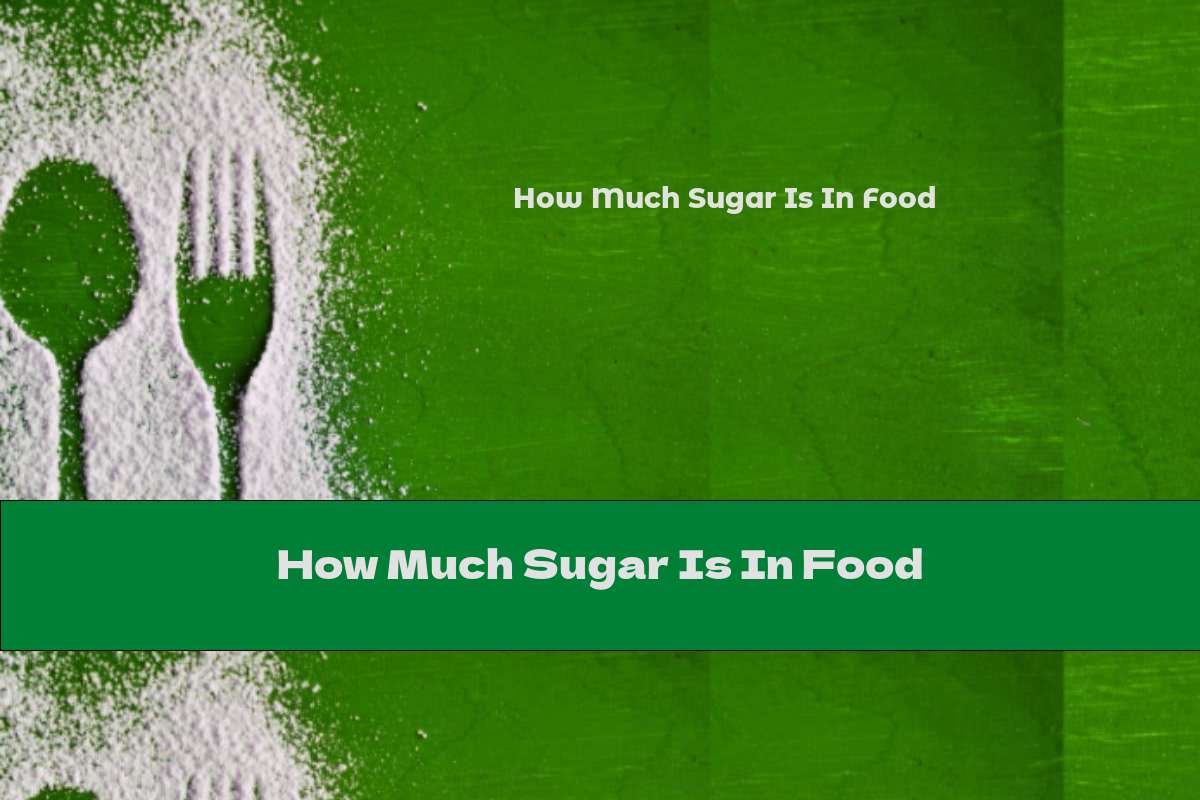How Much Sugar Is In Food
 Author: Dean Rouseberg
Time for reading: ~3
minutes
Last Updated:
October 20, 2022
Author: Dean Rouseberg
Time for reading: ~3
minutes
Last Updated:
October 20, 2022

Do you know how many grams of sugar are in your favorite treats? For example, how much sugar is in a tablespoon of cereal you eat for breakfast? Or how much sugar is in a jar of your favorite soda?
Do you know how many grams of sugar are in your favorite treats? For example, how much sugar is in a tablespoon of cereal you eat for breakfast? Or how much sugar is in a can of your favorite soda?
We all want to be healthy, and for this we try to buy healthy food. We pay special attention to the content of simple sugars in them, that is, ordinary sugar. Manufacturers often add sugar to the product to improve the taste, but do not always indicate this on the labels. This is the so-called "hidden sugar", which is present in the product not only in the form of sucrose (ordinary sugar), but also in the form of maltose, corn syrup, raw sugar, molasses, honey, etc. Due to this, sometimes we we eat up to 50 teaspoons of sugar per day - almost a glass!
Interesting fact : sugar disrupts the absorption of calcium and magnesium, which are necessary for our bones.
How much sugar is in a chocolate bar?We can easily eat a bar of chocolate or several bars a day. Meanwhile:
- A bar of milk chocolate (100g) contains 7 teaspoons of sugar;
- A Snickers bar (52.7 g) contains 6.75 teaspoons of sugar;
- Milky Way (58g) – 8.75 teaspoons;
- Milka chocolate - (40.8 g) - 5.5 teaspoons;
- Twix (50.7 g) - 3 teaspoons in each stick;
- A bag of M&M's (47.9 g) - 7.5 teaspoons of sugar.
Interesting fact: sugar is addictive, similar to drugs. Increased blood sugar contributes to rapid fatigue, so there is a desire to eat sweets. Sugar temporarily relieves the symptoms, but then they return again.
You have probably already heard more than once about the harm of carbonated water. Now we suggest you find out how much sugar is in a jar of your favorite drink:
- Coca cola (0.33 l) - 8.25 teaspoons of sugar;
- Pepsi (0.33 l) – 8.75 teaspoons;
- Red Bull (0.25 l) – 6.9 teaspoons;
- Sprite (0.33 l) - 8.25 teaspoons.
Interesting fact: sugar contributes to the development of caries. The fact is that when sugar and bacteria in the mouth interact, acid is formed that destroys tooth enamel.
How much sugar is in 100 grams of fruit?
Yes, there is sugar in fruits. So if you are planning a carbohydrate-free diet, consider these numbers:
- Mango - 3.2 teaspoons of sugar;
- Bananas - 3 teaspoons of sugar;
- Apples - 2.6 teaspoons of sugar;
- Pineapples - 2.5 teaspoons of sugar;
- Grapes - 4 teaspoons of sugar;
- Lemons - 0.6 teaspoons of sugar;
- Kiwi - 2.3 teaspoons of sugar;
- Apricots - 2.3 teaspoons of sugar;
- Strawberries - 1.3 teaspoons of sugar;
- Raspberries - 1 teaspoon of sugar;
- Blueberries - 1.7 teaspoons of sugar;
- Cranberry - 1 tsp. sugar;
And even 100 grams of tomatoes contain 0.7 teaspoons of sugar.
Interesting fact: sugar leads to obesity, as it is deposited in the liver in the form of glycogen. If glycogen reserves in the liver exceed the usual norm, the eaten sugar begins to be deposited in the form of fat reserves.
How much sugar is in other popular foods
We used to think of yogurts in plastic cups as healthy food. So useful that we buy them for ourselves and our children. But one cup of yogurt (50g) contains at least 1 teaspoon of sugar.
4 teaspoons of sugar are contained in a glass of almost any grape juice sold in our supermarkets.
A bag of salted (!) peanuts contains 6 teaspoons of sugar. But what can we say, if even the diet breads that we nibble on in the hope of satisfying hunger, also contain about half a teaspoon of sugar.
Interesting fact: Eating sugar increases stress. When we eat stress with sweets, it leads to an increase in stressful conditions, anxiety and various types of neuroses.
Read the packaging carefully if you want to lose weight.
Related Articles
- The Ultimate Guide to Food Combining in Nutrition
- The Power of Fermented Foods in Nutrition: Benefits and How to Include Them
- The Ultimate Guide to E333 in Nutrition: Benefits, Food Sources, and Recipes
- The Ultimate Guide to Sulfite-Free Foods in Nutrition
- The Ultimate Guide to Organic Food for Nutrition: Benefits and Recipes